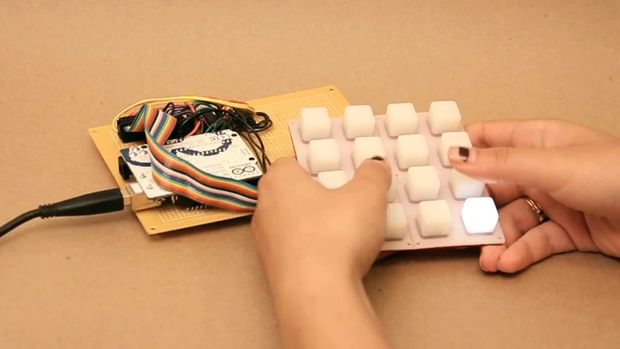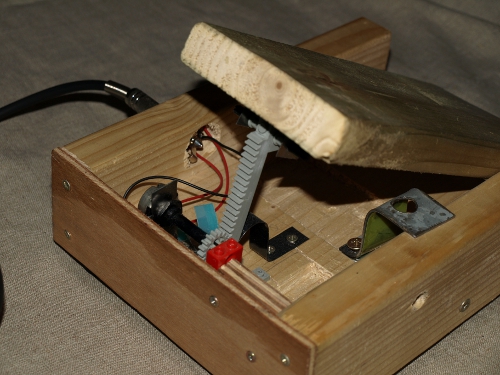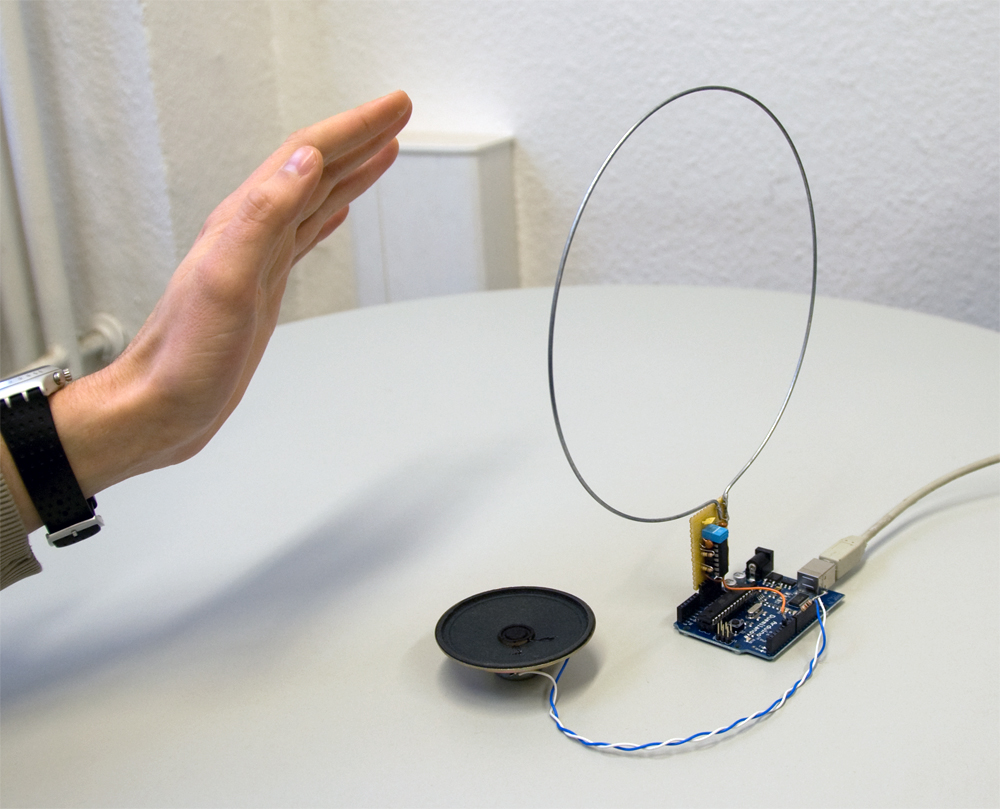Sugarcube, a grid based music controller with accelerometer

Once again Amanda Ghassaei sent a cool project she’s been working on lately as an extension of the work she’s been doing on the monome project. Sugarcube is an open source, grid-based, standalone MIDI instrument self-contained and relatively cheap to make. It communicates via a MIDI output with other electronic MIDI instruments and software environments like Ableton and MaxMSP.
An Arduino Uno generates all of its MIDI data and drives LEDS, buttons, a 2 axis gyroscope, a 3 axis accelerometer, two potentiometers, and the whole device is powered by a lithium-polymer battery making it pretty portable.
She published detailed documentation on Instructables to make one yourself and shared a bunch of videos to discover its main features:
Basically this project is:
A portable, Arduino-powered, grid-based MIDI controller that boots up into a variety of apps to do lots of things with sound. The controller has 16 backlit buttons, used as both inputs and outputs to give the controller some visual feedback. 2 potentiometers give analog control, depending on the app the pots are assigned to tempo, MIDI velocity, pitch, and scrolling (making the avaible grid space larger than 4×4). An x/y accelerometer and an x/y gyroscope add some playful, gestural control to the device; most of the apps implement a “shake to erase” control and several respond to tilt in various ways.
It boots up into 7 different apps, though it has the potential to boot up into 16 total. This device is primarily a MIDI controller, but I’ve also written an app that allows you to pull the button and analog data into MaxMSP and to control audio.
…
With this project, I was interested in making a device that was a little more self-contained and relatively cheap to make (lots of buttons = lots of $). In keeping more with the concept of the tenori-on, this controller does all its app processing itself, it does not rely on a computer to process button presses/analog controls into MIDI. This means you can plug it directly into a synth or any device that understands MIDI and you’re good to go, no computer required. It runs off a beefy LiPo battery that keeps it running for days on a charge, so it’s fairly portable as well. In keeping with the monome side of things, it’s totally open source and can be adapted to your particular audio setup/needs. All the Arduino code is up on github, along with a MaxMSP patch that decodes data from the controller into something usable in Max.










